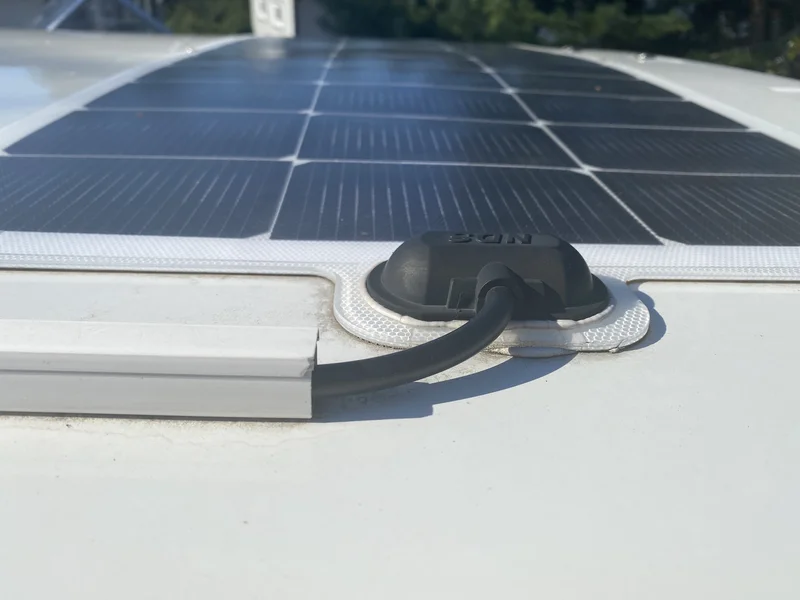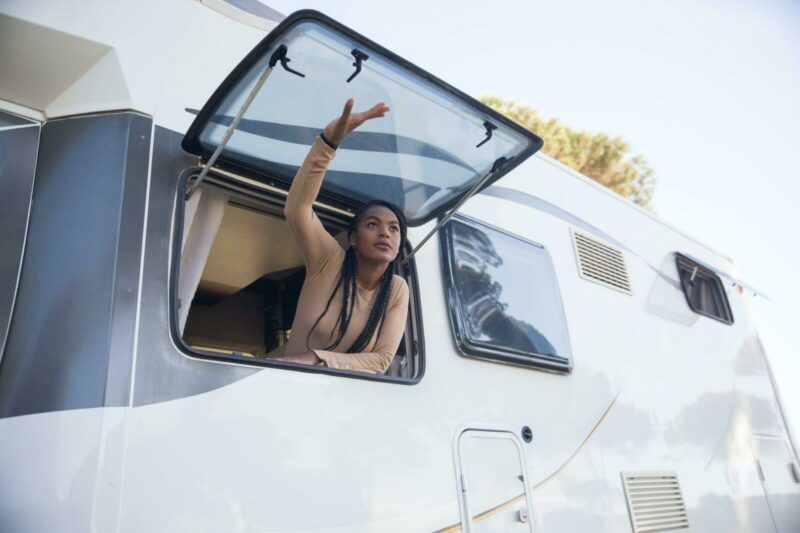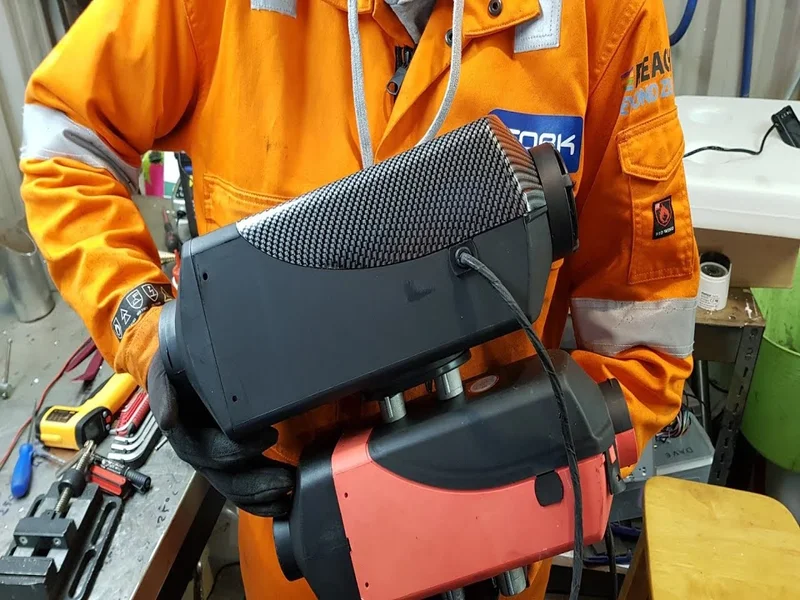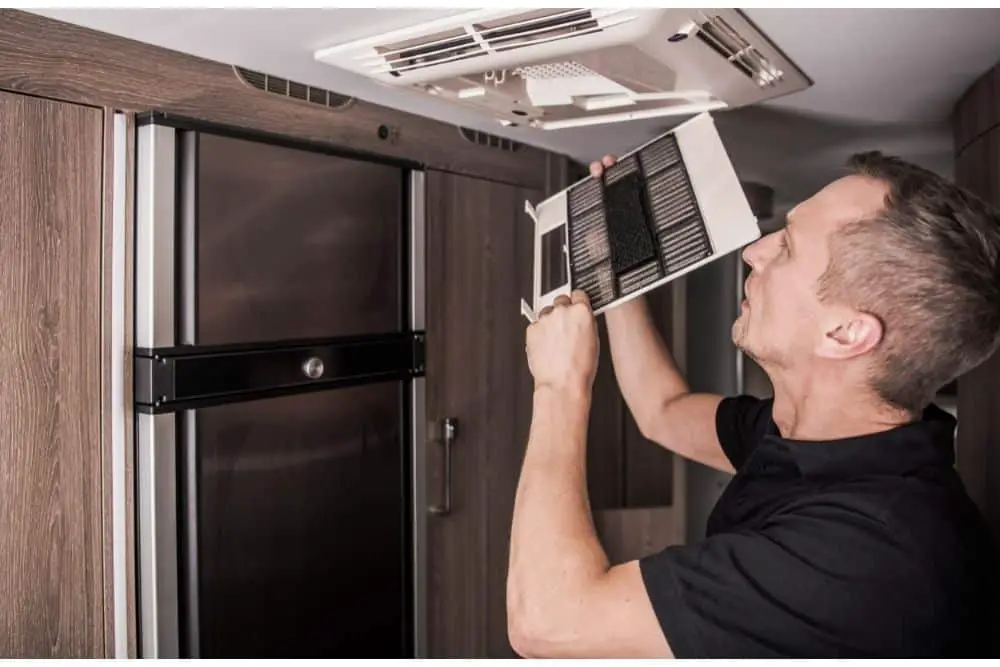The ability to live off the grid is surely bliss for all RV owners out there. Installing solar panels on the roof of your RV is one way to do it (and also a great way to lower energy costs).
Not to mention the lower cost of maintenance compared to the likes of a dedicated generator.
That said, in order to sustainably operate an air conditioner in your RV while also being able to use your 110V and 12V components, you will need a minimum of 1,800 watts of power from your panels along with a battery bank. But this number can also be altered depending upon the size of your RV and your inverter.
Let us have a brief look into this to help you decide how many RV solar panels you require you power your RV.
RV solar power systems : Explained

There is a considerable amount of work that goes into designing a system that integrates solar panels with your RV. The process isn’t as simple as it sounds. Five main components work together to make this integration work flawlessly: Solar panels, RV battery bank, 12V DV side of RV’s electrical panel, AC side panel, and an inverter.
From a technical point of view, the function of solar panels is to supply electricity to the battery bank. The amount of electricity you can store solely depends on the size of your batteries. The battery then supplies power to two separate units: The AC and DC side panels.
While the power is directly supplied to the DC electrical panel, an inverter is required to act as a mediator for the AC unit.
In order to ensure that you don’t run out when camping with your family in the middle of nowhere, having a rough estimate of your power requirements is highly imperative.
Calculating your power needs
Watt/hour rating indicates the amount of energy that an appliance uses per hour. You can use this metric to get an idea of the total energy needs of all your devices along with the air conditioning unit.
For example, if you have installed a TV unit that has a rating of 50 watts, then it would have consumed 1200 watts of energy if it is used for 24 hours on a stretch.
On average, RV air conditioning units require about 1700-3500 starting watts and 900-1500 watts of running watts to function properly.
Here is an online calculator that you can use.
Now that you have an estimate, you need to add in some extra power to cover a few projected cloudy days and extra usage.
Why do I need a battery bank?
You might think, why can’t I just power the whole array using a battery bank. Well, for starters, you can’t have sunlight all day long. Not to mention winter days which bring fewer hours of direct sunlight.
To calculate the size of the battery needed, you will need to determine your average electrical use per day along with how many days of additional battery backup capacity you want.
A battery bank will allow you to stay powered even when the sun is down. Coming to the type, you can either get a lead deep cycle battery or a lithium one. If the higher price is not a major drawback for you, then we suggest you go for the lithium-ion banks.
Lead deep cycle batteries can get damaged quite easily if one isn’t familiar with the limitations.
All about the inverter
Since most devices are only designed to work with alternating current, you will need an inverter to convert the DC output from your battery to AC. This will help you to power devices like refrigerators, toasters, etc.
In order to power an air conditioning unit in an RV, your inverter must have heavy wattage. The ideal range lies between 2800-3000W.
| Inverter | Initial requirement | Running requirement |
| 7000 BTU RV | 1,700 watts | 600 watts |
| 10000 BTU RV inverter | 2,000 watts | 700 watts |
| 15000 BTU RV inverter | 3,500 watts | 1500 watts |
BTU stands for British Thermal Units*
Before buying an inverter, be sure to check its rating followed by comparing it to your projected load.
Installing solar panels on your RV

A standard-sized RV has a rooftop area of 280 square feet. However, since they have plenty of vents and windows plus the air conditioning unit, you cannot cover the entire area. A typical solar panel generates about 15 watts per square feet.
Thus, you need to set these solar panels in a strategic way as per your RV so that you can get the maximum output. Given below are the steps required to install panels on your RV :
- Lay out your panels while making sure that nearby AC units do not cast shade on them under sunlight.
- Secure the mounting hardware to your roof using a sealant which is compatible with your roof membrane. Make sure you carefully apply the sealant and do not leave any gaps behind, as this may affect your roof’s watertight seal.
- Now fit the panels onto the mounting hardware. Screw them into the panel frame carefully.
- Connect the wiring to your battery tank by drilling holes into the desired location.
- Now connect the battery bank to the inverter and electrical panel. Use a multimeter to check the polarity of the connections and ensure that you have placed the wires in the correct order.
Here is a video that demonstrates the process.
We own Eriba caravan that has a pop-top roof and it rises some additional questions when you wish to install solar panels. To make it visually and practically correct we made a short article about how we installed solar panels on the pop-top roof without any extra cable going around the pop-top roof.
Weatherproofing and safety
If you connect your inverter directly to your battery bank, then there is a high chance that the inverter may over-discharge the batteries. This is where a “solar charge controller” comes in. These controllers will limit the incoming voltage from the solar panels. Here are some more safety tips :
- Exercise all the safety precautions when working with electricity.
- Gently brush your solar panels 1-2 times every two months to get rid of the dust on top of them.
- Check your cables periodically for corrosion and waterproof all the holes post drilling.
- Be sure to install a fuse between two different connections so that an electricity alteration does not damage your devices.
Tip: If you are looking for a compact yet efficient AC system for your RV, then you can consider getting a Soft Start System that lowers the start-up power demand significantly.
Summing up
To sum up, the number of solar panels you will require will depend on the size of your RV. Solar panels come in different kinds of capacities and sizes. Statistically, 80-100 is a sweet spot (with each covering a square foot).
The average RV uses about 600kWh power in a month, whereas a 100-watt solar panel will generate about 12kW/month. Now that you have got the idea, you can get started with the installation. Using a clean and renewable source of energy will also help you take a conscious step towards the environment.








